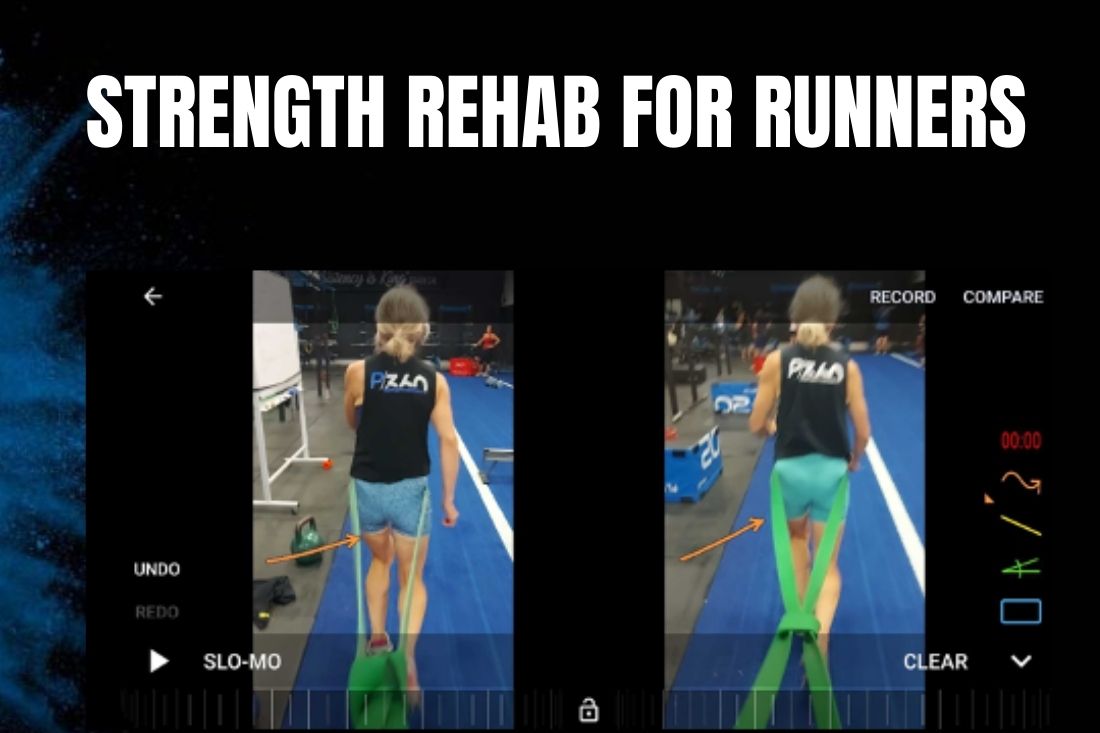Rehab for runners with Hamstring Tendinopathy via strength training
Kim Massy has been an active member at our Enoggera club for 1.5 years, training 3 times each week between small group PT sessions and gymnastics. For those that know Kim, you’ll be aware that she is also a competitive endurance runner, covering distances of 50-60kms each week. The demand of this weekly training schedule has seen Kim suffer from several injuries since the start of this year, with the most recent, a chronic Hamstring Tendinopathy. This has had a significant impact on her ability to train and perform – running and gym at Perform360.
With the introduction of our new injury surveillance system, along with support from her QSMC Sport Physio, Dolph Francis, we tailored Kim’s program to rehabilitate the injury and improve her running proficiency – becoming lighter on her feet/ using less energy.
Our process is clear: start with low impact drills and exercises that switch on her muscles in support of her Hamstring, while strengthening her Hamstring – Tendon and muscle. With a clearly set out plan, build the intensity and volume of work to achieve our goals.
After 7 sessions and 3 weeks, Kim has made significant improvements. So much so, that her running group (many who are experiencing similar ails) are wondering how she has made such rapid improvements – rehabilitation and performance.
So how did we do it? Below are some of the strategies we have been using:
- Static, slow, and low impact (feet on ground) exercises to start with, coupled with a good plan. For example, a good work-rest balance is important for recovery and performance gains.
- An appropriate warm up prior to running is vital.
Below are several screenshots (Fig 1) using the Coach’s Eye app to illustrate improvements and help with Kim’s learning.
- Resisted Marching – Left of screen is from Tuesday 26th of April 2022, and the right side of screen is from Thursday the 28th. Note the marked change over 48 hours!


Fig 1. Resisted March, injured leg [L] & non-injured leg [R] – 26/4 & 28/4
After following the process, it didn’t take long for Kim to progress. We were able to increase the impact and movement velocity of the drills and exercises, e.g., A-skipping, which is a running specific drill designed to build strength in running positions.
Within 2-weeks of starting, we had moved onto Banded Rotations with Foot Switch (Fig 2). This exercise is designed to activate trunk muscles involved in anti-rotation/ trunk disturbance while running.


Fig 2. Banded Rotations with Foot Switch at 2-week mark
Importantly, we used drills to develop both, strength, and conditioning (repeatability of the movement under duress).
So, after completing the conditioning segment of each session, we would finish with an strength exercise that Kim was familiar with, e.g., Lateral Sliders – designed to strengthen the groin, hip, and thigh together. This was done at the end to avoid fatigued muscles impacting key drills, e.g., Resisted A-skipping.
To help understand the injury we used ForceDecks technology to provide detail physiological information (see Fig 3).
It is important to consider longer-term injuries, where it has been shown that strength asymmetries remain for 1-2 years after the initial injury incident. Using ForceDecks, it helps to manage injury risk.

Fig 3. Hamstring strength after 3-weeks of rehabilitation
Next steps
The final steps are to progress strength level symmetry (<10%), followed by return to full training sign off.
Kim’s Words
“Since injuring my hamstring in March, I’ve been working with Jamie over the last 4 weeks on improving some imbalances which contributed to my running injury.
Not only have I returned to running, I have also strengthened my weaker side. I’m now running with more awareness and know when I need to self-correct and realign my running gait. I’m surprised by my progress and back running to pace pre injury with my running group”


